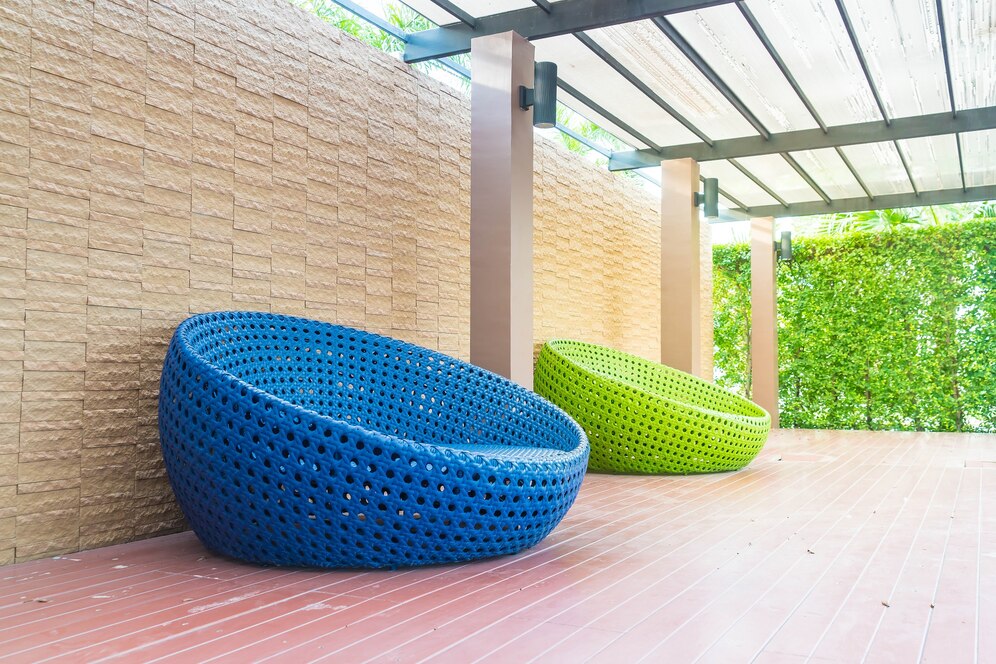When enhancing your outdoor living space, patio covers offer a versatile solution. They extend the comfort and functionality of your home. Among the various options available, Insulated Patio Covers and Enclosed Patio Covers are two popular choices. But which one is right for your home? this article, we will delve into the features, benefits, and considerations that help you make an informed decision.
Understanding Insulated Patio Covers
What are Insulated Patio Covers?
Insulated Patio Covers are designed to provide superior thermal performance. These covers typically consist of panels with an insulating core. This core is usually made of foam and sandwiched between two layers of aluminum or other durable materials.
Key Benefits of Insulated Patio Covers
Temperature Regulation: One of the primary advantages of Insulated Patio Covers is their ability to maintain a comfortable temperature beneath the cover. The insulating core helps keep the area cooler in the summer and warmer in the winter. This allows you to use the space in various weather conditions.
Energy Efficiency: By reducing the heat transfer between the covered area and the outside environment, Insulated Patio Covers can contribute to energy savings. This feature can be particularly beneficial if the patio cover is adjacent to windows or doors leading to the interior of your home.
Noise Reduction: The insulating materials used in these covers also provide sound-dampening properties. This can help minimize noise from rain, hail, or nearby traffic, creating a more peaceful outdoor environment.
Durability: Insulated Patio Covers are built to withstand harsh weather conditions, including heavy rain, snow, and intense sunlight. The robust construction ensures a long lifespan with minimal maintenance.
Considerations for Insulated Patio Covers
Cost: Insulated Patio Covers tend to be more expensive than non-insulated options. This is due to the advanced materials and construction techniques involved. However, the long-term benefits and energy savings can offset the initial investment.
Installation Complexity: Installing Insulated Patio Covers may require professional assistance. The panels can be heavier and more complex to assemble compared to traditional covers.
Exploring Enclosed Patio Covers
What are Enclosed Patio Covers?
Enclosed Patio Covers, also known as patio enclosures or sunrooms, are structures that fully enclose an outdoor space. This transforms it into an indoor-like area. These covers typically feature walls, windows, and sometimes even doors, providing complete protection from the elements.
Key Benefits of Enclosed Patio Covers
Weather Protection: Enclosed Patio Covers offer comprehensive protection against rain, wind, insects, and other outdoor elements. This feature makes them ideal for creating a comfortable and usable space regardless of the weather conditions.
Versatility: Enclosed Patio Covers can be used for a variety of purposes. These include a dining area, home office, playroom, or relaxation zone. The enclosed design allows for more control over the interior environment, making it suitable for year-round use.
Increased Home Value: Adding an enclosed patio can enhance the overall value of your home. It provides additional square footage and can be marketed as a versatile living space, appealing to potential buyers.
Customization: Enclosed Patio Covers offer a high degree of customization. You can choose from various window styles, door types, and interior finishes to match your aesthetic preferences and functional needs.
Considerations for Enclosed Patio Covers
Cost: Enclosed Patio Covers are generally more expensive than open patio covers. This is due to the additional materials and labor required for construction. However, the added value and functionality can justify the investment.
Building Codes and Permits: Constructing an enclosed patio may require compliance with local building codes and obtaining necessary permits. It’s important to check with your local authorities before starting the project.
Maintenance: Enclosed Patio Covers may require regular maintenance. This includes cleaning windows and ensuring proper sealing to prevent leaks. However, the level of maintenance is comparable to that of any other indoor space.
Choosing the Right Patio Cover for Your Home
When deciding between Insulated Patio Covers and Enclosed Patio Covers, several factors should be considered to determine which option best suits your needs:
Intended Use: Consider how you plan to use the covered space. If you want a versatile area that can be enjoyed year-round with minimal temperature fluctuations, an Insulated Patio Cover may be the best choice. On the other hand, if you’re looking for a fully enclosed space, an Enclosed Patio Cover might be more suitable.
Climate: Your local climate plays a significant role in the decision-making process. Insulated Patio Covers are excellent for regions with extreme temperature variations. Enclosed Patio Covers provide complete protection from harsh weather conditions, making them ideal for areas with heavy rainfall, strong winds, or frequent insect activity.
Budget: Both options come with different cost implications. Insulated Patio Covers are generally less expensive than Enclosed Patio Covers. However, the latter offers more functionality and can increase your home’s value. Evaluate your budget and consider the long-term benefits of each option.
Aesthetic Preferences: The appearance of the patio cover should complement your home’s architectural style. Insulated Patio Covers typically have a sleek and modern look. Enclosed Patio Covers can be customized to match various design preferences.
Maintenance: Consider the level of maintenance you are willing to commit to. Insulated Patio Covers require less maintenance than Enclosed Patio Covers. The latter may need regular cleaning and upkeep.
Local Regulations: Ensure you are aware of any local building codes and permit requirements. Enclosed Patio Covers often involve more stringent regulations due to their structural complexity.
Conclusion
Both Insulated Patio Covers and Enclosed Patio Covers offer unique benefits that can enhance your outdoor living experience. Insulated Patio Covers provide excellent temperature regulation, energy efficiency, and noise reduction, making them ideal for comfortable year-round use. Enclosed Patio Covers, on the other hand, offer comprehensive weather protection, versatility, and increased home value. This makes them suitable for a wide range of uses.
Ultimately, the right choice for your home depends on your specific needs, climate, budget, and aesthetic preferences. By carefully considering these factors, you can select the patio cover that will best enhance your outdoor space and provide lasting enjoyment for years to come. Whether you opt for the thermal performance of an Insulated Patio Cover or the all-weather protection of an Enclosed Patio Cover, you’ll be investing in a feature that will enhance the beauty and functionality of your home.




